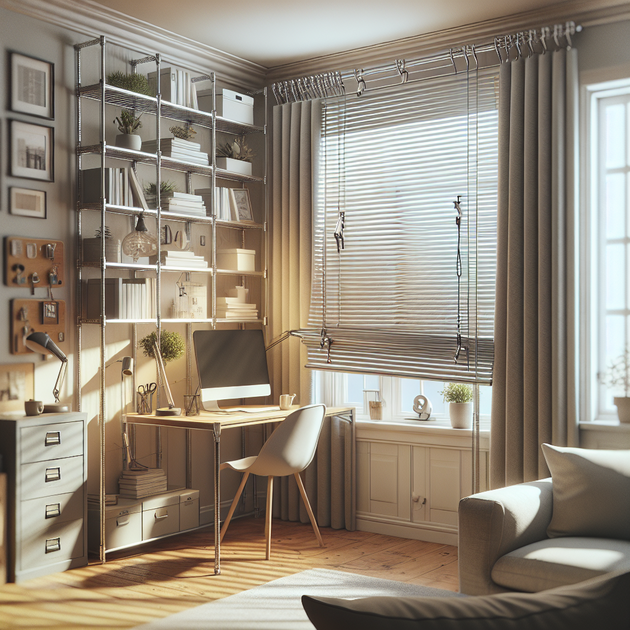Is there anything more annoying than trying to adjust a window blind when the control cord is tucked way behind heavy steel shelving? It’s the kind of little problem that sneaks up on you—one minute you’re just trying to let some light in, and the next you’re awkwardly reaching behind racks and nearly losing your balance. If you’ve found yourself in this situation (or want to avoid it), there are actually some surprisingly simple solutions.
Understanding the Problem with Control Cord Placement
The main issue comes down to accessibility. When furniture or shelving gets placed in front of windows—especially sturdy things like steel racking—the control cord for your blind can end up hard to reach. This isn’t just an inconvenience; it can also make adjusting your blinds unsafe if you’re stretching or climbing each time.
Most people don’t plan where their cords will end up after rearranging a room or adding storage shelves. It’s easy to overlook until you find yourself wrestling with cords every morning. Luckily, a few tweaks can make life much easier without moving all that heavy shelving.
Simple Ways to Move or Extend Your Blind’s Control Cord
There’s good news here—you don’t need power tools or fancy gadgets. Just a bit of creativity and maybe some inexpensive supplies from your local hardware store or online can do the trick. Here are some options:
- Cord Extenders: You can buy ready-made extenders that snap onto your existing chain or string. They come in different lengths and styles.
- DIY Extensions: A bit of strong string or even some fishing line can add length so the pull hangs right where you need it.
- Cord Guides: Adhesive-backed cord guides let you route the chain around obstacles and bring it forward where it’s easy to grab.
- Magnetic Hooks: For metal racking, magnetic hooks are a game-changer—they hold the cord securely at arm’s length without drilling holes.
- 3D Printed Solutions: If you have access to a 3D printer (or know someone who does), there are free files online for custom clips and guides designed just for situations like this.
An Anecdote from Real Life
A friend once moved into an apartment where their only window was partly blocked by sturdy industrial shelving—a leftover from the building’s previous life as a workshop. The control cord for their blind dangled uselessly out of reach behind the rack. Rather than squeeze their hand through every time they wanted sunlight, they grabbed a few feet of paracord from their toolbox and tied it onto the end of the pull chain. With just a basic knot and a little adjustment, they had an easy-to-grab extension that reached right around the side of the shelf. That tiny change made mornings so much easier—and inspired them to look at other small home annoyances as fixable puzzles.
Tips for Making Your Blinds More Accessible
If you’re considering rearranging your space—or if you already have tough-to-reach blinds—these quick reminders might help:
- Measure before moving large furniture near windows; see where cords will land
- Avoid tying cords in knots that might jam or tangle inside the mechanism
- If you rent or can’t modify walls/shelves, look for no-drill solutions like adhesive hooks or magnets
- For families with kids or pets, keep long cords tidy and out of reach using safety cleats
- If all else fails, consider motorized blinds—now more affordable than ever—but simple extensions usually do the trick!
Get Creative with Functional Prints and Everyday Hacks
This kind of everyday challenge is exactly what communities focused on functional prints love solving. You’ll find plenty of [open-source designs](https://www.printables.com/tag/blind-cord) online—from simple clips that redirect cords around obstacles to clever handles that make pulling easier with one hand.
Even if you don’t have access to a 3D printer yourself, local maker spaces often offer printing services at low cost. Or check if friends or neighbors are hobbyists—they’re usually happy to help out with such quick projects.
Small changes—like moving or extending your control cord—can make daily routines smoother without major renovations.
So next time you spot an awkwardly placed blind cord hiding behind heavy shelving, what solution will work best for your space?

Leave a Reply